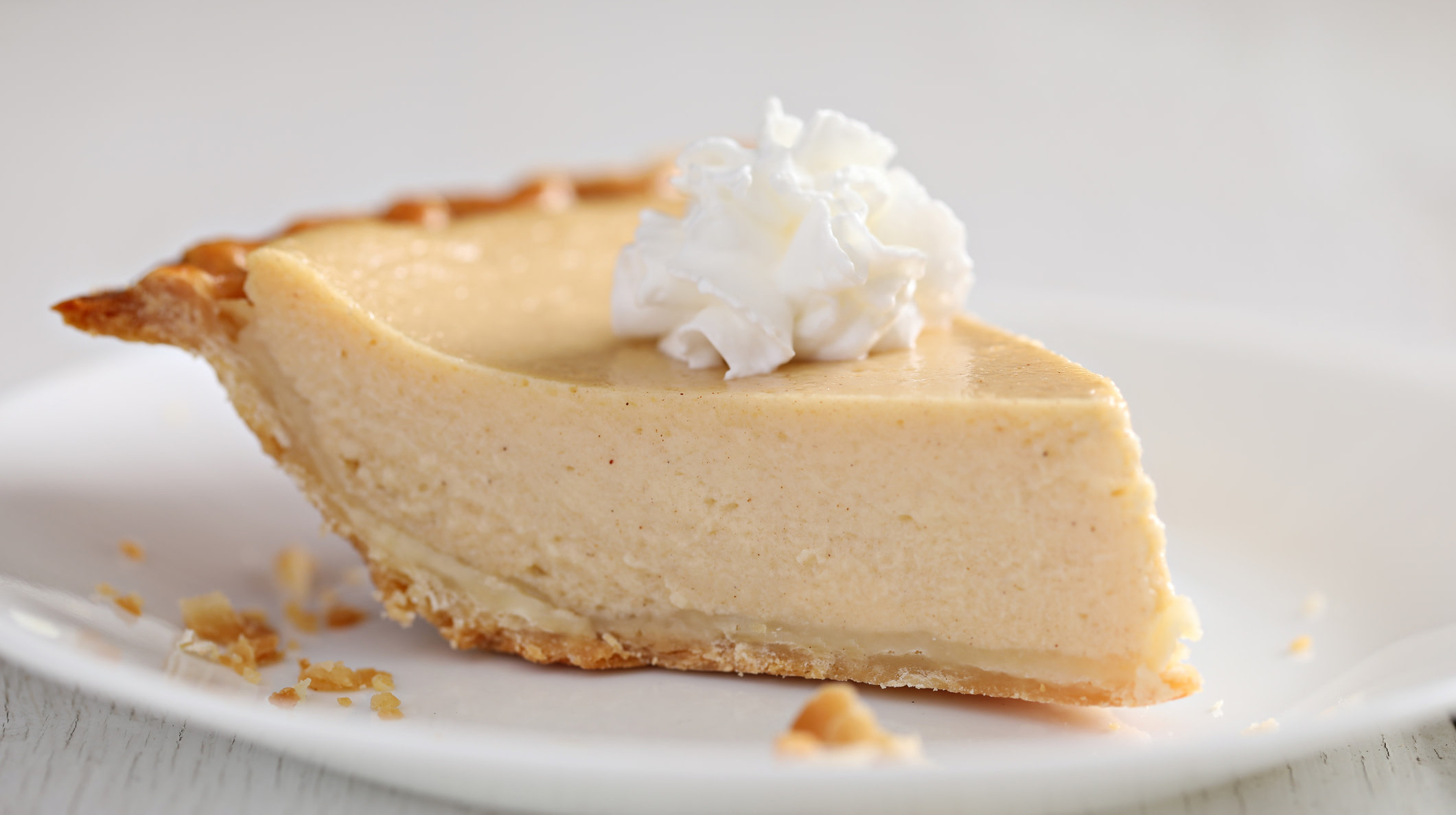Jus' What Kind Of Pie Is Chess Pie?
The first pie I ever baked came together last fall. I'd finally fulfilled a promise to myself that I'd turn an orchard sojourn into something more than Instagram content. Admittedly, the double-crust apple pie wasn't pretty, but it was edible, and I found the whole process quite relaxing, if labor-intensive.
As one does with new passions, I went overboard. Before long I stumbled across an ambitious pie chart from Modern Farmer showcasing the best time of the year for specific fillings based on seasonally available produce. The berries and stone fruits of summer become crisper; starchier apples, pumpkins and sweet potatoes as the weather cools. Frostbitten January makes do with pecan, and February gives up the garden altogether in place of chocolate. Then comes April's vexations. Sandwiched between lemon and strawberry rhubarb, where a tart early fruit might be expected, was the image of a single egg and a sliced-up stick of butter.
Here was an infographic that mystified more than it explained. Southern readers reflexively understand what that image symbolized, but I, hailing from yankee parts of the country, was clueless. Pie filling must be more than eggs and butter, right? I now know the shortest answer is yes, barely. Since it's a pie, there's also a lot of sugar. And that's it—except when it isn't.
What the graphic depicted was chess pie, a pie defined by its absence. The origins of its name are lost to history, but one apocryphal telling captures its perplexing yet simple construction. Legend has it a baker fielding inquiries about the pie's flavor responded in a drawl, "It's jus' pie." Over time, this supposedly became chess pie.
In addition to a custard of sugar, butter, and eggs, chess pies generally incorporate a thickener. Quite a divide exists between the flour and cornmeal camps, but whatever the preference, this primordial batter is flavorful enough to satisfy on its own when baked with a splash of vanilla.

Plain chess pie as a dessert reminds me of nothing else. The brittle, crème brûlée-like surface rests atop a gooey, saccharin cloud of indiscernible flavor. The sweetness and texture approach something close to whipped honey, and the sticky filling practically dissolves in your mouth. No ice cream or whipped cream is needed here. The moist, gelatinous filling envelops flaky shards of crust and provides more than enough sugar. This is a dessert that needs no sidekicks and makes no apologies.
That said, the base for classic chess pie becomes a wonderful primer for experimentation. Chess pies show up in kitchens all over the country under different names. Pecan is probably the most famous type of chess pie, but all nut pies are technically chess pies. This includes the trademarked Derby Pie, a chocolate-walnut mixture invented specifically for the Kentucky Derby. The toasted flavor of tree nuts offsets the filling's powerful sweetness and provides a welcome crunch.
Chess pies also come zested with lemon, creamed with buttermilk, fluffed up with coconut or darkened with cocoa. Ancient pies existing further back on American baking's evolutionary map, such as sorghum and vinegar, are also related to chess pies. A note on that second one: Some chess pie recipes call for the addition of vinegar to cut the overwhelming rush of sugar, and for a moment I thought chess and vinegar pies were interchangeable, but it turns out vinegar pie is its own subset of chess pie.
If there's an easier bake than classic chess pie, I haven't found it. The classic custard assembles with almost no effort. If you use a store-bought pie crust, the most challenging tasks between you and forkfuls of homemade pie are melting butter, mixing some liquids with some powder, heating an oven, and setting a timer. Anyone can do it. Everyone should do it. Chess pie should not be confined to the South nor to April. It should be celebrated everywhere, at all times, as the great American dessert.
